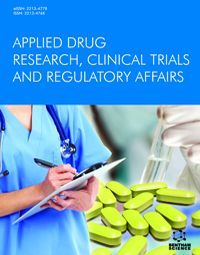
Abstract
Background: Primary biliary cholangitis (PBC) is a chronic autoimmune cholestatic liver disease characterized by progressive destruction of the intrahepatic bile ducts, followed by fibrous substitution of the ducts and potential evolution in cirrhosis. The geographical disparity in the prevalence of PBC suggests a possible role of environmental factors in developing the disease. We analyzed two groups of patients with different geographical prevalence.
Methods: This study concerned the analysis of 14 Caucasian patients in two groups: ten patients enrolled in the Digestive Diseases Unit, University of Catanzaro (Italy), and four patients enrolled in the Department of Hepatology, University Hospital Kràlovskè Vinohrady of Prague (Czech Republic). The statistical analysis was performed using the software IBM SPSS (v. 20, Windows).
Results: The Italian group showed a statistically significant difference in the total bilirubin values at diagnosis and during the last control (0.74±0.267 vs. 0.56±0.246; p-value: 0.013). Moreover, the comparison between the two groups showed a statistically significant difference in the serum albumin values at the time of the last control (4.6±0.231 vs. 4.15±0.532; p-value: 0.048).
Conclusion: Our data indicate an effective difference in the onset and clinical presentation between our two groups. More epidemiologic, prospective, and multicenter research projects are warranted to advance PBC knowledge in Europe.
Keywords: Liver disease, autoimmunity, therapy, ursodeoxycholic acid, primary biliary cholangitis, biliary epithelial injury.
[http://dx.doi.org/10.1007/s12016-019-08772-7] [PMID: 31713023]
[http://dx.doi.org/10.1111/liv.14466] [PMID: 32279422]
[http://dx.doi.org/10.1002/hep.22906] [PMID: 19554543]
[http://dx.doi.org/10.1016/S0140-6736(03)13808-1] [PMID: 12853201]
[http://dx.doi.org/10.1016/j.jhep.2017.03.022] [PMID: 28427765]
[http://dx.doi.org/10.1016/j.dld.2018.11.008] [PMID: 30584000]
[http://dx.doi.org/10.1053/j.gastro.2004.05.005] [PMID: 15300581]
[http://dx.doi.org/10.3748/wjg.v23.i39.7191] [PMID: 29093628]
[http://dx.doi.org/10.1055/s-0037-1603324] [PMID: 28564724]
[http://dx.doi.org/10.1002/hep.510230307] [PMID: 8617422]
[http://dx.doi.org/10.1002/hep.22567] [PMID: 19003916]
[http://dx.doi.org/10.1016/j.dld.2013.01.028] [PMID: 23490343]
[http://dx.doi.org/10.1136/gut.2009.184218] [PMID: 20332522]
[http://dx.doi.org/10.1002/hep.20907] [PMID: 16250040]
[http://dx.doi.org/10.1016/S1089-3261(03)00105-3] [PMID: 14594135]
[http://dx.doi.org/10.1056/NEJMra043898] [PMID: 16177252]
[http://dx.doi.org/10.1016/S1542-3565(03)00134-4] [PMID: 15017671]
[http://dx.doi.org/10.1007/s10067-005-0178-x] [PMID: 16496080]
[http://dx.doi.org/10.4254/wjh.v7.i7.926] [PMID: 25954476]
[http://dx.doi.org/10.1002/hep.22428] [PMID: 18752324]
[http://dx.doi.org/10.1016/j.jhep.2015.07.038] [PMID: 26282232]
[http://dx.doi.org/10.1056/NEJMoa1714519] [PMID: 29874528]
[http://dx.doi.org/10.1053/jhep.2002.36088] [PMID: 12198643]
[http://dx.doi.org/10.1053/j.gastro.2014.08.029] [PMID: 25160979]
[http://dx.doi.org/10.3390/jcm10051061] [PMID: 33806503]
[http://dx.doi.org/10.1111/liv.14627] [PMID: 32757367]
[http://dx.doi.org/10.1016/j.jhepr.2019.05.005] [PMID: 32039371]
[http://dx.doi.org/10.1021/jm025529g] [PMID: 12166927]
[http://dx.doi.org/10.1038/nrd2619] [PMID: 18670431]
[http://dx.doi.org/10.1016/j.jhep.2015.02.023] [PMID: 25920087]
[http://dx.doi.org/10.3390/diseases8020020] [PMID: 32532037]









